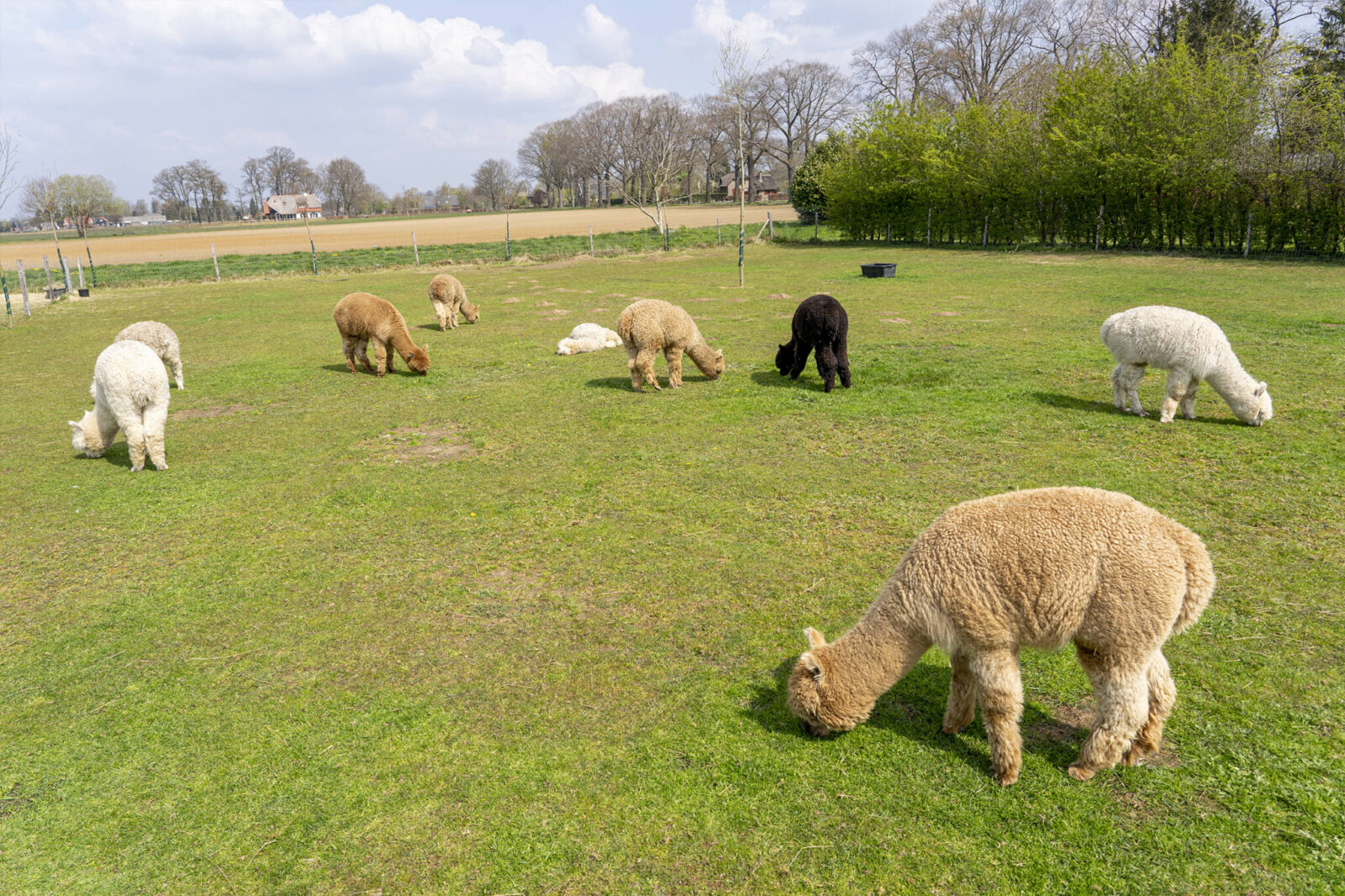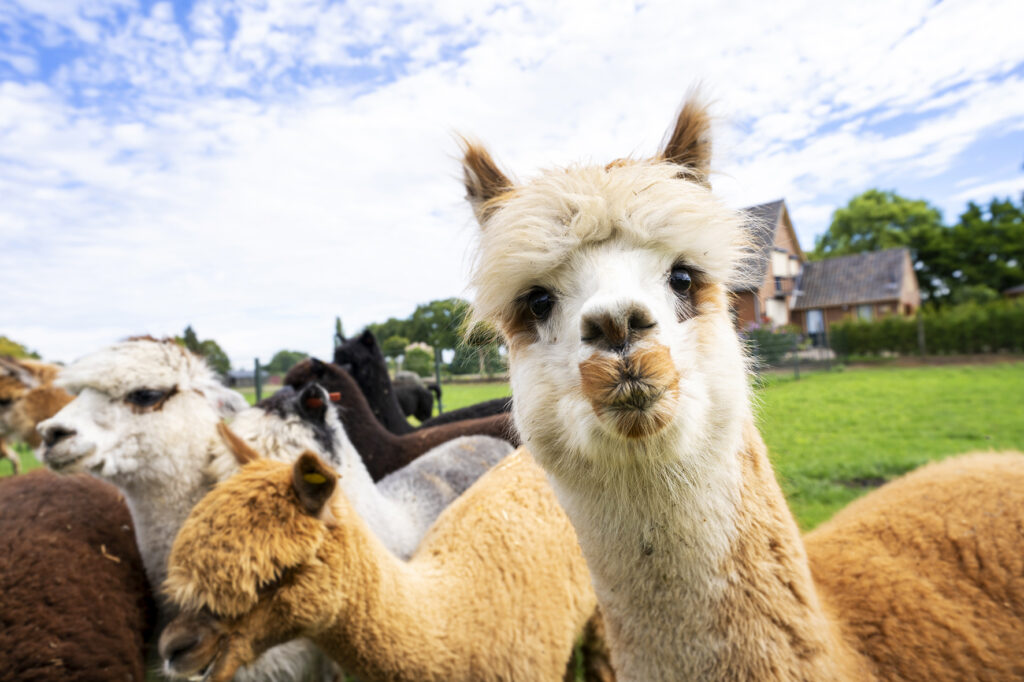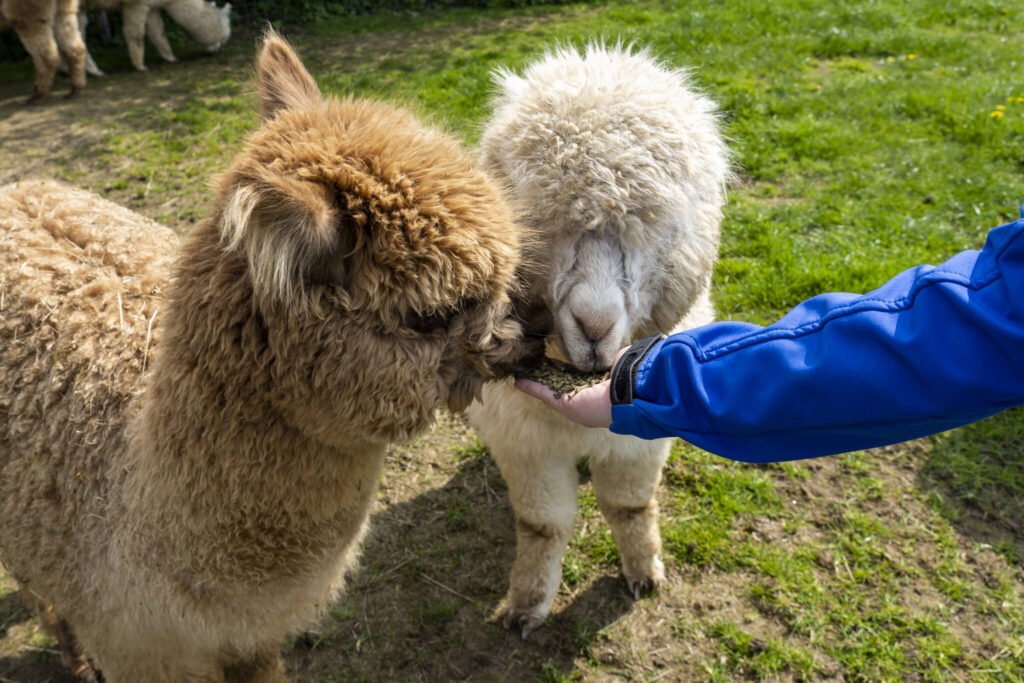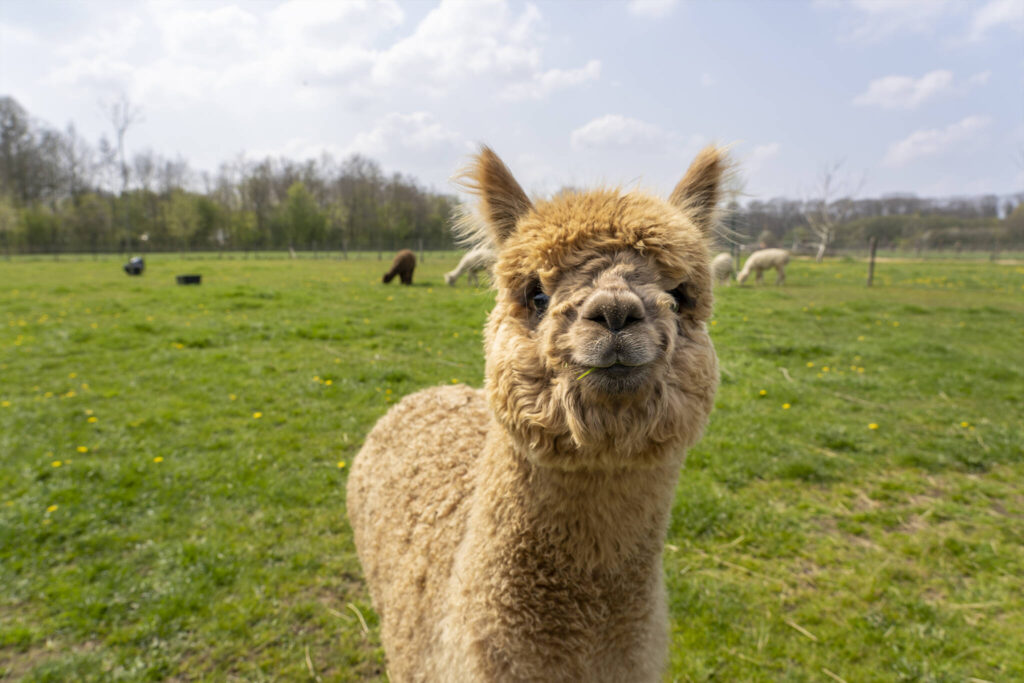Alpacas are true herd animals and therefore must be housed in groups. They prefer to be outside in the meadow, because besides being called herd animals, they are also outdoor animals. For housing alpacas, there are some aspects you need to take into account. Which ones exactly? We’ll tell you in this blog!
Space for alpacas
The guideline in terms of space for two alpacas is at least 1000m2. For each additional alpaca, you can add 500m2.
Grazing
If you have more space, you can divide the land the alpacas are standing on into several pieces so that you can graze the alpacas regularly. By grazing, we mean that the alpacas are on another part of the pasture. The piece of pasture used for this purpose then has time to recover. The advantage for the alpacas of this is that it significantly reduces the risk of worm infestation.
Tip: always check for poisonous plants in and around the enclosure. Remove them immediately to protect the alpacas.
Sandbox
In addition, alpacas love to roll around in a sandbox. This is good for the care of their skin and fur.
Fence
The fence around the pasture should be about 1.5 metres high. It is important that the fencing is secure. A good option is fencing or wire netting with openings that are not too large. If the alpacas carry a lot of wool, a electric fence will have little effect.
Open shelter for several alpacas
Alpacas can be kept outside all year round provided there is a shelter for them. An open stable, for example, is a great option for alpacas
- For shade in summer
- For shelter from wind and rain in winter
- Provide at least 2 m2 per alpaca in the stable
- If alpacas cannot go outside, keep at least 4m2 per alpaca
For mother animals with young, sick animals or new animals that have to go into quarantine, it is nice to have an extra/separate pen.
Light panels in the roof of the stable ensure that alpacas can make optimal use of the light hours/sunlight during the winter months.
Floor
As bedding in the stable, straw is a good option. This is hygienic if you change it regularly. The straw is a good addition but not necessary. Do not use sawdust or wood chips, as these can get stuck in the wool. A partially paved floor of the enclosure outside or inside, will ensure better wear of the toenails.
Food and drinking water in the enclosure
Pipes cut in half or gutters can be used as feeders in the enclosure. About half a metre per animal is recommended. The water bowl should be high enough so that the animals do not stand in it (this prevents dirty water). To mimic natural feeding behaviour, it is better to feed hay in a bowl on the ground rather than in a hay rack.
If you have any questions about housing alpacas or taking care of them in any other way, do not hesitate to get in touch! Our nutritionist Mariska is here to help. You can reach Mariska by sending an email to advies@garvo.nl.




